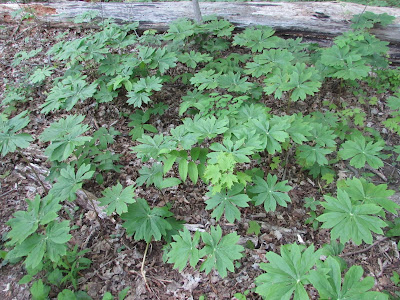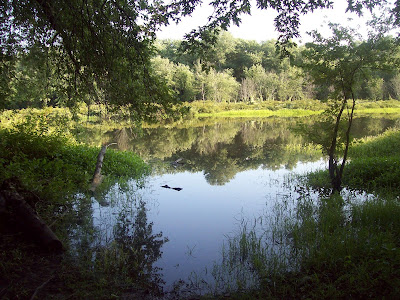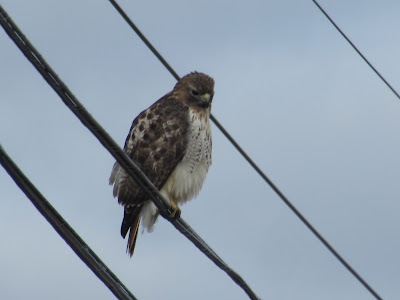Nature Note #170: Earth Laughs in Flowers

May-apples ( Podophyllum peltatum ) As summer steadily marches towards us, the countryside reminds us about the wonderful variety of wildflowers that flock the roadsides and dazzle the fields and woods. Flowers are a universal sign of nature and of her wonderful spread of colors, forms, and scents that blanket the landscape in the warmer months of the year. Many of the flowers we see along our roadsides and throughout our woods and fields are transplants brought over from Europe and Asia. Some like purple loosestrife ( Lythrum salicaria ) and garlic mustard ( Alliaria petiolata ) are nuisance species that take over areas of habitat that other native plants once thrived in. According to a report published in Ecological Economics , "an estimated 5000 plant species have escaped and now exist in U.S. natural ecosystems, compared with a total of about 17,000 species of native U.S. plants." (Pimental, Zuniga, and Morrison, 2004) This is damaging to many ecosystems found in ...




